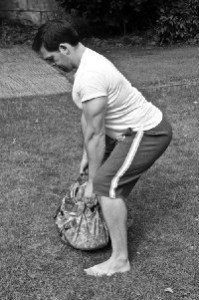Kevin Archibald asks,
“When I have weight trained in the past I became very bulky and it hindered my martial arts by slowing me down and prevented direct movement. I therefore then did a LOT of yoga and Pilates which shrank muscle right down and have me strong compact muscle that was very flexible. This however made me very slow also. What is ideal training alongside martial arts to prevent these side effects?”
This is a common issue and a question that many find themselves asking when putting together a fitness training programme for the Martial Arts. The key issue is really one of specificity – is your training specific for your goal of improving your Martial Arts performance? When considering this you also need to realise that this is a dynamic, constantly-changing process and that your fitness training programme should evolve as you do, and this is where many go wrong.
There is not a perfect programme because everyone is different, and at different stages of development. The development cycle is also highly variable, meaning that you or I could be dramatically better at a certain exercise or skill than someone who is, overall, far more competent at their sport or activity. This spawns the comparisons that people often make between elite athletes and the general public, such as the recent news article about Sam Bennett not being able to do a single Pull Up. The NHL No.1 Draft for 2014 (meaning he is a very, very good Ice Hockey player) put it well when he said:
“I was wanting to do the best I can in every test. But, I guess, ultimately games aren’t won or lost if you can do a pull-up in the gym.”
While upper body pulling strength is certainly useful for many things, Bennett was completely right in pointing out that there are more important things for him to focus on.
That said, for the majority of Martial Artists, we can anticipate that there are a few specific physical traits that will be universally useful.
Agility
Are you able to move your body fluidly, in multiple planes? You should focus on developing your ability to move dynamically in multiple directions. The quality of movement is more important that the intensity here.
Try: Bear Crawls, Turkish Get-Ups and a variety of jumping movements.
Power
Can you generate power with all four limbs, and deliver that power in the direction that you want it to go? There is, of course, such a thing as too much strength and power for specific sports and activities. In Martial Arts, it is not just your absolute strength and power that you need to be concerned with but your strength-to-weight ratio (how much strength and power can you generate compared to your size).
Try: Olympic Lifting, Kettlebell Swings and Snatches, and a variety of throwing movements.
Flexibility
Does your flexibility allow you to move with the range of motion that you need? Alongside flexibility we also require stability and that often comes from your agility, strength and power work. It is easy to gauge flexibility by overly focusing on the range of motion in a specific technique but, as already suggested, this should be relevant to the overall performance plan.
Try: Dynamic mobility and stretching movements that have a more direct transfer into performance.
Endurance
Are you able to perform at a high intensity for as long as you need to? This can be a very subjective area of strength and conditioning as, for many, there are some specific variables that need to be taken into account. Consider the sprinter who is perfectly designed for the event that they are training for, and has just the right amount of endurance to work at ultra high intensity for 10 seconds or so. If they decide to run a marathon then it’s unlikely to go well, but it doesn’t matter.
Try: Perform shadow boxing, bag and pad work, Kata and other techniques that have a direct transfer to your art.
By Matt Palfrey
Author Bio
Matt Palfrey is a strength and conditioning coach, author, blogger, Health and Wellbeing Advisor for BMI Healthcare and the founder of a number of health and fitness brands. He has a particular fondness for sandbag training – the low tech, high results training method. He has kindly agreed to support Bushido Hombu with his knowledge by way of regular blog posts based upon questions that we raise, so feel free to contact Kevin Archibald if you have some specific questions.
You can find him blogging at www.sandbagfitness.blogspot.com or at www.sandbagfitnessstore.com
You might also be interested in checking out his book Sandbag Training For MMA & Combat Sports

